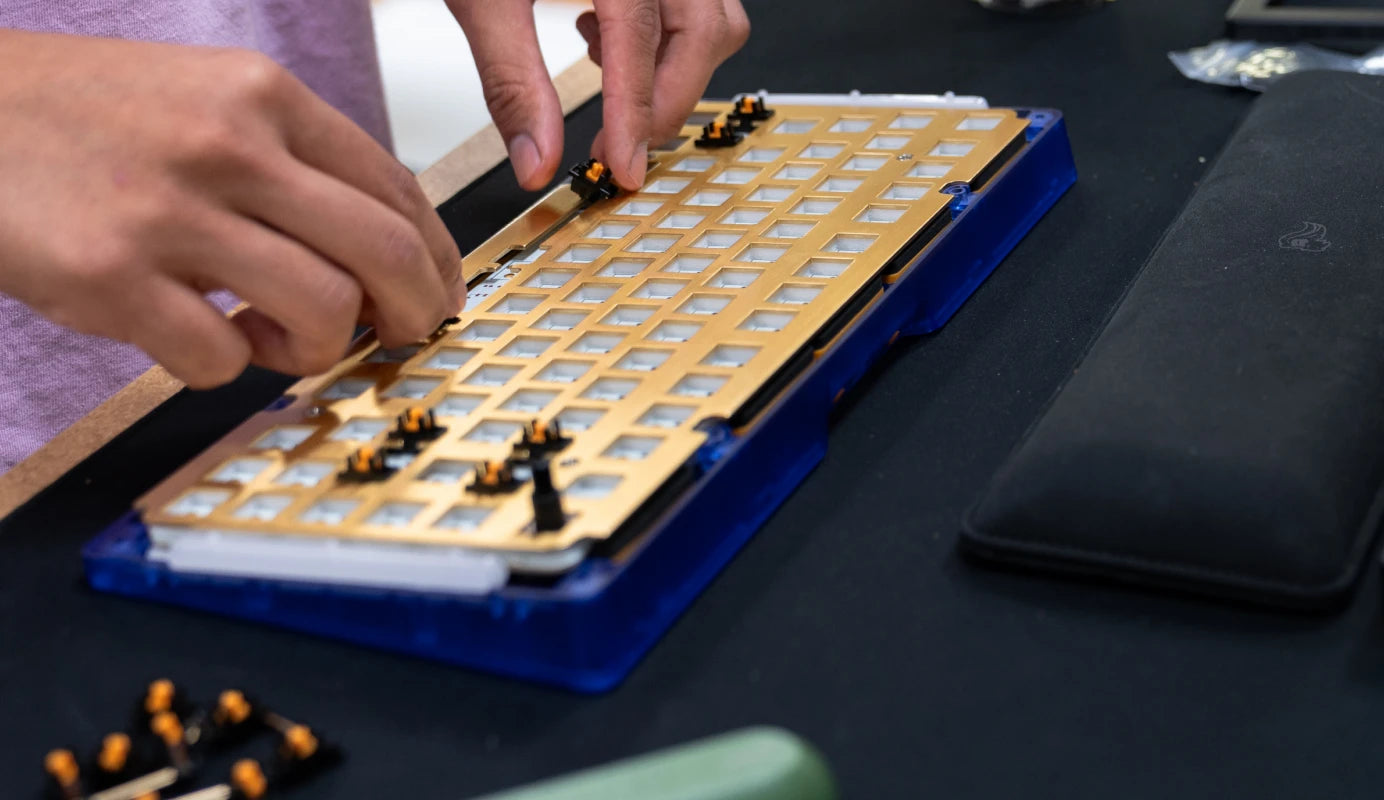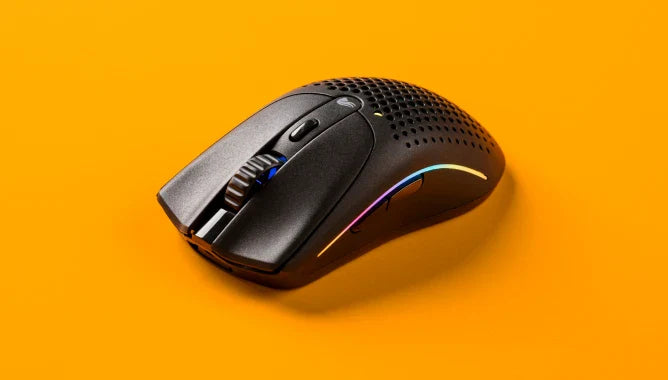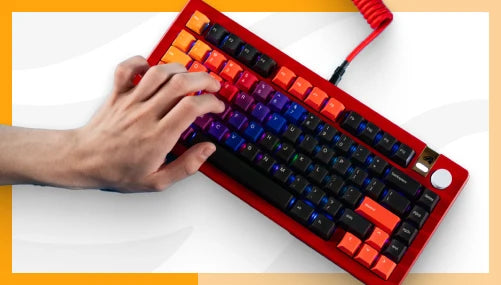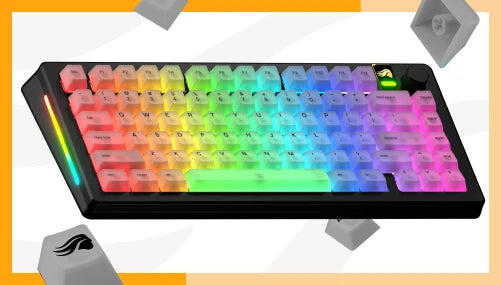How to Lube Mechanical Switches
HOW-TO
Change Switch Plates
Overview
A mechanical keyboard’s switch plate protects its internals by absorbing pressure caused by typing and gaming.
The GMMK 3’s included switch plate can be swapped with alternate plates made from different materials, letting you fine-tune typing firmness and acoustic pitch.
What's in the Box?
If you’ve ordered a standalone GMMK 3 Switch Plate, you should receive:
- 1 × GMMK 3 Switch Plate
- 1 × Full Set of PCBA Screws
- 1 × Full Set of PCBA Screw Backing Nuts
Tools Needed
- 1 × Screwdriver (Philips #00 if you did not keep the screwdriver included in your GMMK 3’s box)
- 1 × Switch Puller (Included with GMMK 3)
- 1 × Keycap Puller (Included with GMMK 3)
Accessing the Switch Plate
- Make sure the keyboard is unplugged and wireless keyboards are powered off before proceeding.
- Remove all keycaps using the included puller by pressing its arms over the north and south side of the keycap until it clicks, then gently pull directly upward.
- Remove all switches using the included puller by using its metal teeth to push in the clips located at the base of the north and south sides of each switch. You should feel a click as the clips disengage.
a. If removing MX switches: Once clips disengage, pull straight up to remove.
b. If removing HE switches: Once the clips disengage, the switch should automatically pop out of the socket without needing to pull up. - Remove the keyboard’s knob by slowly, but firmly, pulling it up and off its post.
- Flip the keyboard over to access its underside, ideally resting it on a softer surface like a large mousepad.
- Use your fingernail or a plastic pry tool to remove the keyboard’s rubber feet inserts. The amount will vary depending on the size and case material.
a. Metal 65% & 75%: 4 Feet Positions
b. All Plastic & 100% Metal: 8 Feet Positions - Using your screwdriver, remove the keyboard’s case screws located directly beneath its rubber feet positions, and place them aside.
a. Metal 65% & 75%: 4 Case Screws
b. All Plastic & 100% Metal: 8 Case Screws - Bracing both the keyboard’ top and bottom cases, carefully flip the keyboard back over.
- Lift the keyboard’s top case up and away before setting to the side.
- Grab the keyboard’s PCBA (Plate & PCB assembly) with one hand, and slowly lift up just enough to access the cable connecting the PCB and the USB-C daughterboard.
- Use your other hand to grab the cable connected to the keyboard’s PCB near the connection point, and carefully, but firmly, unplug it.
- Identify the 4-6 PCBA screw positions that attach the current plate to the keyboard’s PCB depending on its size.
a. 65% & 75%: 4 PCBA Screws
b. 100%: 6 PCBA Screws - Flip the PCBA over to identify the “PCBA Screw Backing Nuts” in the same positions as the screws on the front. These are what they screw into to connect the two parts.
- We recommend sitting the PCBA up perpendicular to the table as you unscrew the front PCBA screws. This allows you to easily catch/remove the CPBA screw backing nuts.
- Once all screws and their associated backing nuts have been removed, the PCBA should not separate into the PCB, Plate, and a sheet of PCBA foam.
Transferring Stabilizers
Attached to the existing plate are black and orange stabilizers with the amount depending on the size of your GMMK 3. These must be removed, then transferred to the new plate.
- To remove a stabilizer, look for small tabs directly above the orange stems on each send (below for Spacebar).
- With one hand, use the screwdriver to press in the tab to disengage it. Your other hand should be bracing the back of the plate, and you can use your finger to push up on the now disengaged stabilizer. Do this for both ends.
- With both ends disengaged, rotate the stabilizer to get the bottom bar in a position where you can lift the entire stabilizer up and out of its position.
- Repeat this for all stabilizers.
- To install stabilizers onto the new plate, slide the metal bar through the stabilizer position on the plate.
- Finally, press in the top tabs (bottom for spacebar) to lock them back into place.
Installing the New Plate
- Set the old plate aside, and lay the PCB back down on the table.
- Line up the PCBA foam with the PCB, using the rotary knob’s post as an anchoring point for easier alignment.
- Place the new switch plate overtop, sandwiching the foam sheet between it and the PCB.
- Once again, sit the unfasted PCBA up perpendicular to the desk and hold it together with one hand.
- Use the other hand to replace a screw backing nut, holding the nut in place with a finger as you screw its associated PCBA screw back into place.
- Repeat until all screws and screw backing nuts are affixed.
a. Note: Extra PCBA screws and backing nuts are included with standalone GMMK 3 Switch Plates if you’ve misplaced any during this process.



Closing Up Your Keyboard
- Now, with your PCBA fully reassembled, you can plug back in the USB-C daughterboard cable.
- Set the PCBA back into the bottom case while pushing the cable’s length into the recessed channel until flush with the bottom case.
- Ensure proper alignment before placing the top case back on.
- Keeping the top and bottom cases pressed together, carefully flip the keyboard back over to access the case screw positions.
a. Tip: Struggling to keep everything in place while screwing the cases together? Try setting your keyboard upright, perpendicular to your desk. - Screw the top and bottom cases back together, starting with the corners before moving inward. At the start, use your hand to gently press the cases together to make the process easier.
- Plug your switches back in.
a. For MX Switches: Align the switch’s pins with the hotswap socket on the PCB before pressing straight down until it clicks into place.
b. For HE Switches: There are no pins to align, just press the switch into place until it clicks. - Place keycaps back on by lining up the bottom of the keycap with the cross-shaped stem on the switch before pressing down until fully seated.
- Congratulations!
Tips & Tricks
Heavier Keyboard
Wanting a heavier keyboard? The Brass plate option adds substantial weight to the GMMK 3, especially ones using plastic cases.
Maximum RGB
Want the max RGB? The Polycarbonate plate option has a translucent white color that diffuses keyboard backlighting for an enhanced glow.
More Flexible Typing Experience
Want a more flexible typing experience? A more flexible typing experience may feel more comfortable for heavy typists or during extended gaming and productivity sessions:
- If your GMMK 3 has a metal switch plate pre-installed, like Brass or Aluminum, replace it with a more flexible material like Polycarbonate or FR4.
- If your GMMK 3 has Firm (Blue) gasket modules pre-installed, try replacing them with Flex (Glorange) gasket modules which use soft PORON foam. Click here for more about replacing gasket modules.
Firmer Typing Experience
Want a firmer typing experience? A firmer typing experience offers a more precise and consistent feel ideal for competitive gameplay and fast typers:
- If your GMMK 3 has a more flexible switch plate pre-installed, like Polycarbonate or FR4, replace it with a firmer material like Brass or Aluminum.
- If your GMMK 3 has Flex (Glorange) gasket modules pre-installed, try replacing them with Firm (Blue) gasket modules made entirely of hard silicone.
Additional LInks
Support
Questions or concerns regarding your Glorious GMMK 3 Switch Plate can be directed to our support team.
Note that Glorious is unable to offer comprehensive support for parts (switches, stabilizers, modding tools, etc.) purchased from other companies.
Warranty
Important Notices
- 1 year limited manufacturer warranty for Glorious GMMK 3 Switch Plate.
- Small objects could be swallowed.
- Keep out of reach of children below the age of 10.


